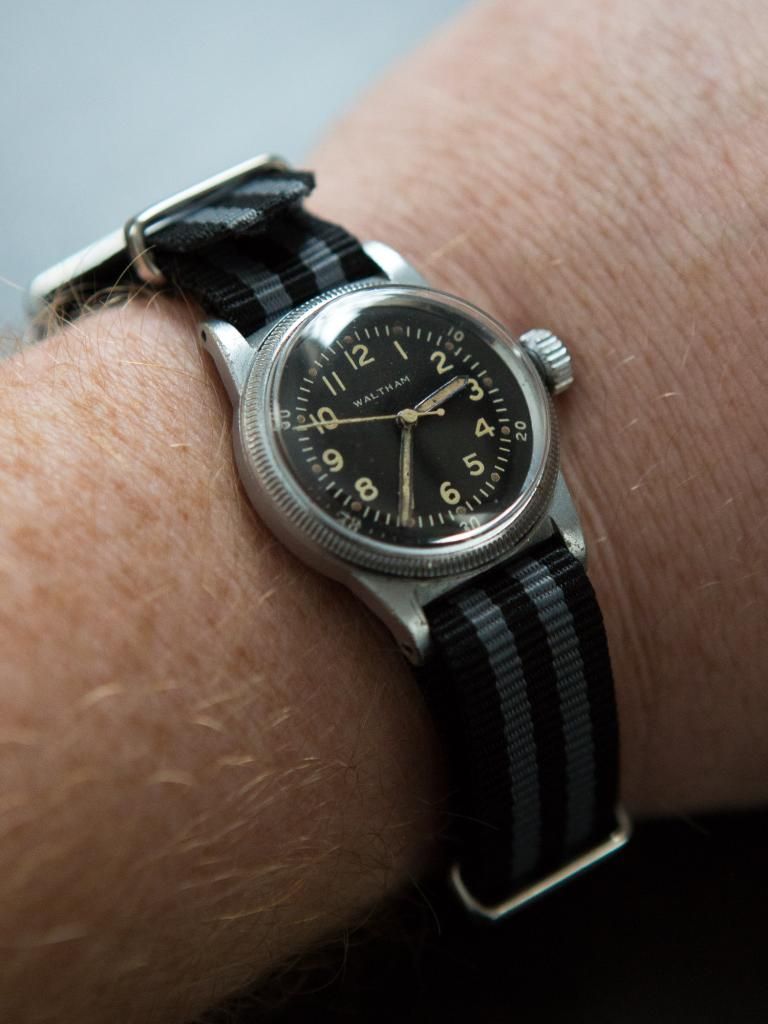
Hamilton as a military watch manufacturer and the "birth" of the legendary Hamilton Khaki 987A
Share
First came the Hamilton Marine Chronometers
“Hamilton’s greatest claim to military reputation was the marine chronometer, which was an incredible achievement…” René Rondeau, veteran Hamilton expert and author of “The Watch Of The Future.”
Things continued as usual until World War II broke out in Europe in 1939, and boy, was Hamilton always ready for the call of duty. Naturally, the company was a natural choice to produce more timepieces for the armed forces.
They had earned their credentials by supplying the military during World War I. Hamilton's patriotism was widely demonstrated during this wartime period when they completely ceased all production for the consumer market to focus on manufacturing for the military.
Before we get to these legendary military wristwatches, Hamilton produced various timing instruments and timers with improved components. All of this was seemingly unforeseen in the previous round, but undoubtedly had an impact on the next World War.
This critical period allowed Hamilton to develop its own anti-magnetic hairspring alloy called Elinvar Extra, followed by the development of new watch oils that had previously been unavailable due to the war. In particular, we must pay special attention to the production of precision marine chronometers.

(A WWII 1941 US Navy Hamilton Marine Chronometer) (Image credit: The Cobbs)

(Photo credit: The Cobbs)
Although marine chronometers were invented in the 18th century by none other than John Harrison, Hamilton played a crucial role in World War II. The essential function of the portable timepiece was to enable celestial navigation at sea, before satellite GPS was available.
It was used to determine the longitude of the ship by comparing Greenwich Mean Time and the exact time at the current location by observing celestial bodies.
A gimbal system was ingeniously penetrated so that the pocket watch contained within was not affected by the movements on board the ship.
With competent production capacity and a declared focus on war, the company could produce qualified marine chronometers for the US Navy and its fleets.
When the government announced it would commission marine chronometers from all American watch companies, Hamilton was the only watchmaker capable of mass-producing them to the Navy's stringent standards.

(A US battleship of the 3rd Fleet during the Battle of Leyte Gulf in 1944, and it was absolutely dependent on a Hamilton Marine Chronometer) (Photo credit: Angelfire)
While Hamilton produced more than 10,000 of these navy blue chronometers, the numbers were not simply filled in, but filled out with meticulous effort.
These accurate and robust chronometers served so well that they were indispensable to the Allies from the beginning of the war until their victory.
Their users attested to their excellent performance under wartime conditions. They were considered an outstanding achievement by their makers. The US Navy awarded Hamilton the well-deserved "E" Award for its outstanding manufacturing quality.
Second Call of Duty
"In 1942, Hamilton stopped all consumer production to ensure we could supply the large number of watches needed by the troops."
During this time, Hamilton and Elgin, Bulova and Waltham had begun producing proper wristwatches for military personnel.
This period is fascinating when we understand when the archetypal Khaki foundation, evident in today's version, was laid. The U.S. Army's first requirement was to develop a watch for the infantry and air force—all based on the A-11 specifications established at that time for all qualified American watchmakers.
The main requirements were the ability to be manually wound, a striking central second hand and a 10-minute marking on the bezel.

(Type A-11 manual from 1944)

(Waltham Type A-11 specification on the wrist) (Image credit: MWR Forum)
Unfortunately, Hamilton's model (since Hamilton movements were produced on a larger scale at that time) meant they could not compete with other manufacturers in terms of price; only Elgin Bulova and Waltham offered the A-11 type.
However, these mil-spec watches weren't the only ones needed, as Hamilton produced two more for the Allies. During the war, Hamilton delivered more than one million watches, a significant increase over the previous round.
In 1940, the US Ordnance Department published a list of requirements for military watches, including pocket watches, wristwatches, etc. This time, Hamilton began producing their own, which featured the reliable 987A movement.
Originally, the movement was housed in a caseback that was snapped onto the bezel and was known as the teacup-style model.
However, due to the lack of water resistance, Hamilton quickly upgraded the 987A model with a dust cover to protect the movement and added a gasket with a screw-down caseback for much better water resistance. Both are engraved with "ORD DEPT USA."

(Hamilton Model 987A from 1942) (Image credit: IMA USA)

(Image credit: IMA USA)
Hamilton supplied these sub-second military watches primarily to the U.S. Infantry, Navy, Air Force, and Marine Corps for six full years after 1942, with approximately 490,000 models of the 987A being produced.
They were reliable and trustworthy and featured either a white or black dial with Arabic numerals. The latter was primarily used by the Navy. Interestingly, some even featured branch-specific dials.

(A US Navy-specified dial of the Model 987A) (Photo Credit: 365 Time)

Source: Gnomwatches.com

